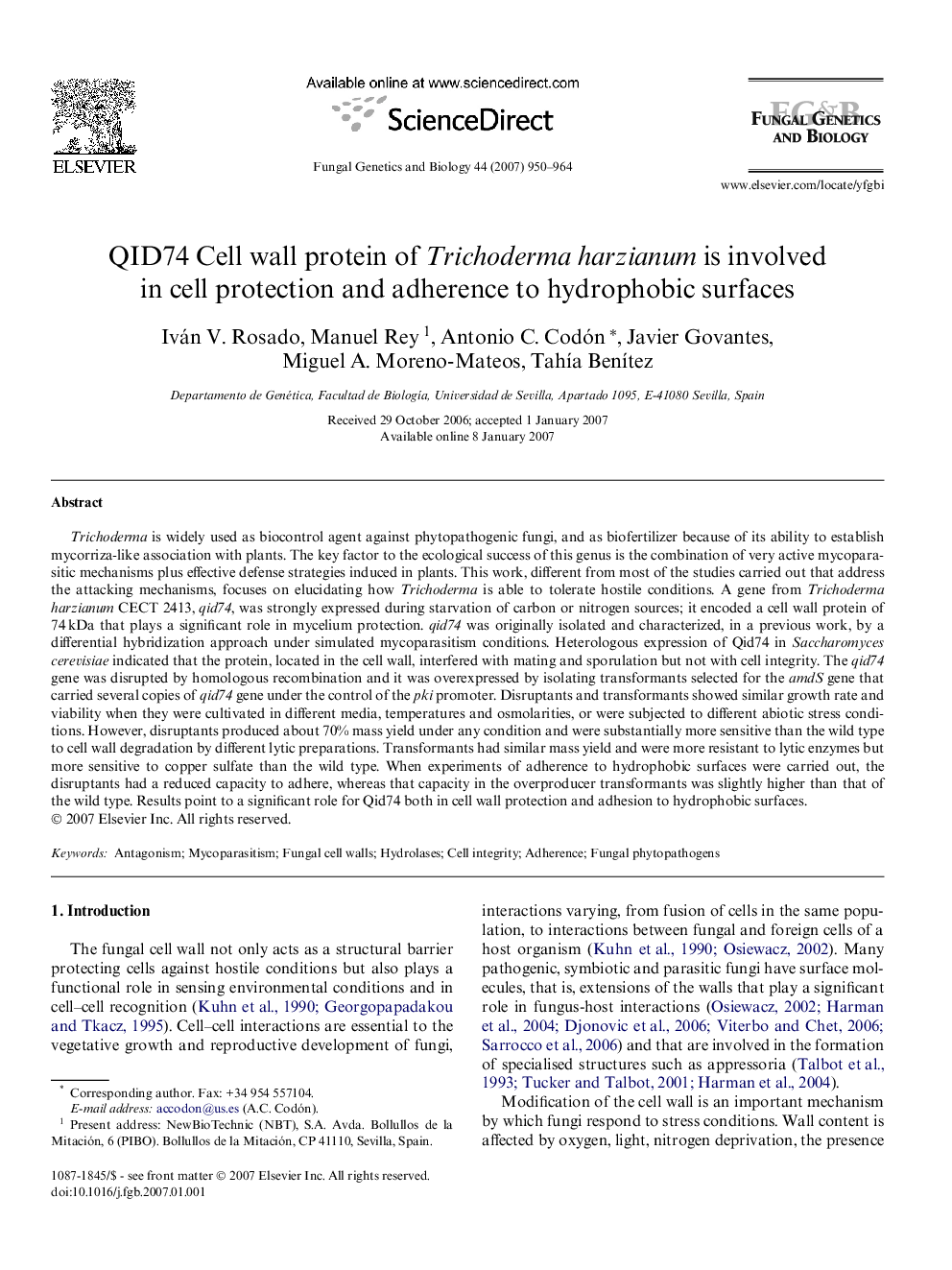| کد مقاله | کد نشریه | سال انتشار | مقاله انگلیسی | نسخه تمام متن |
|---|---|---|---|---|
| 2181266 | 1095285 | 2007 | 15 صفحه PDF | دانلود رایگان |

Trichoderma is widely used as biocontrol agent against phytopathogenic fungi, and as biofertilizer because of its ability to establish mycorriza-like association with plants. The key factor to the ecological success of this genus is the combination of very active mycoparasitic mechanisms plus effective defense strategies induced in plants. This work, different from most of the studies carried out that address the attacking mechanisms, focuses on elucidating how Trichoderma is able to tolerate hostile conditions. A gene from Trichoderma harzianum CECT 2413, qid74, was strongly expressed during starvation of carbon or nitrogen sources; it encoded a cell wall protein of 74 kDa that plays a significant role in mycelium protection. qid74 was originally isolated and characterized, in a previous work, by a differential hybridization approach under simulated mycoparasitism conditions. Heterologous expression of Qid74 in Saccharomyces cerevisiae indicated that the protein, located in the cell wall, interfered with mating and sporulation but not with cell integrity. The qid74 gene was disrupted by homologous recombination and it was overexpressed by isolating transformants selected for the amdS gene that carried several copies of qid74 gene under the control of the pki promoter. Disruptants and transformants showed similar growth rate and viability when they were cultivated in different media, temperatures and osmolarities, or were subjected to different abiotic stress conditions. However, disruptants produced about 70% mass yield under any condition and were substantially more sensitive than the wild type to cell wall degradation by different lytic preparations. Transformants had similar mass yield and were more resistant to lytic enzymes but more sensitive to copper sulfate than the wild type. When experiments of adherence to hydrophobic surfaces were carried out, the disruptants had a reduced capacity to adhere, whereas that capacity in the overproducer transformants was slightly higher than that of the wild type. Results point to a significant role for Qid74 both in cell wall protection and adhesion to hydrophobic surfaces.
Journal: Fungal Genetics and Biology - Volume 44, Issue 10, October 2007, Pages 950–964